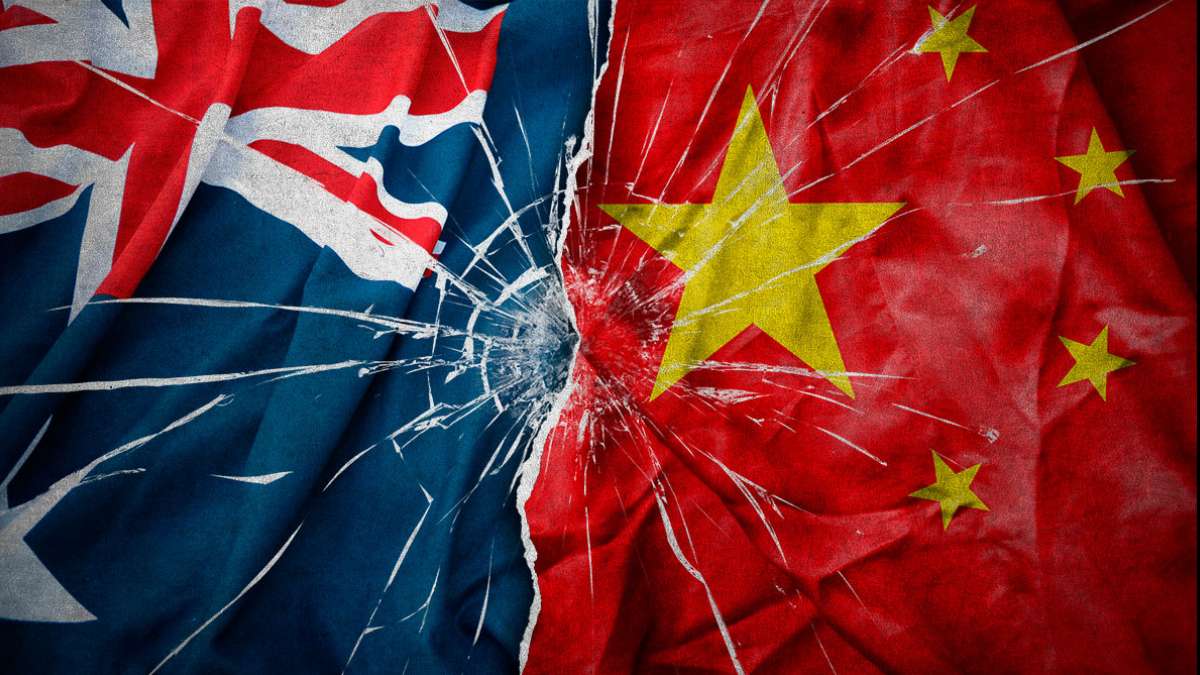This article is more than
3 year oldBombshell White House document reveals US plan to defend Taiwan against China

A US national security document stamped “SECRET” has been declassified and published, revealing the superpower – which Australia has stood alongside in every major military battle – would defend Taiwan against an attack from China.
The 10-page “US Strategic Framework for the Indo-Pacific” report, approved by President Donald Trump for implementation in 2018, was previously not for release to foreign nationals.
Its declassification and public release by the Trump administration, ahead of President-elect Joe Biden’s inauguration, would have otherwise occurred in 2043 after a maximum 25 years.
“The original document has been declassified and released, to communicate to the American people and to our allies and partners America’s enduring commitment to this vital region,” National Security Adviser Robert O’Brien said in his briefing paper cover letter.
“The United States has a long history of fighting back against repressive regimes on behalf of those who value freedom and openness. As the world’s largest economy, with the strongest military and a vibrant democracy, it is incumbent on the United States to lead from the front.”
RELATED: How China will derail Australia in 2021

‘BOLSTER ALLIES AND COUNTER CHINA’
Mr O’Brien said it demonstrates America’s strategic commitments to not only the Indo-Pacific but its regional allies and partners, ensuring preservation and protection of their sovereignty.
“This confirms that US strategic policy in the Indo-Pacific was in substantial part informed and driven by allies and partners, especially Japan, Australia and India,” Professor Rory Medcalf, head of the Australian National University’s National Security College, said in his analysis of the document for the Australian Strategic Policy Institute.
“Contrary to concerns that the Trump administration was veering to a one-dimensional, military-led external policy, there was a clear recognition of the need for holistic engagement to bolster allies and counter China, across the full spectrum from information operations to advanced technology research and infrastructure investment.
“Whether America has the capacity, co-ordination and will to follow through on such a total strategy is another question.”
One objective within the plan is to align with the strategies of Australia, India and Japan, creating a “quadrilateral security framework” and having the four nations as “principal hubs”.
The strategy also includes “accelerating India’s rise” and having a strong India as a “counterbalance to China”. It repeatedly refers to the “US Strategic Framework for Countering China’s Economic Aggression”.
RELATED: Beijing official slams consulate infiltration reports

A senior US official told Axios “a lot of credit” has to be given to Australia and its experience with China, which influenced the drafting of the strategy.
“In many ways they were ahead of the curve in understanding influence operations and interference in domestic systems,” the official said.
Speaking after the release of the framework, former prime minister Malcolm Turnbull said the Australian Government had a “clear-eyed, realistic view of the tensions in the region” at the time, including the need to maintain and bolster alliances and “stand up against coercion”.
“We took a number of measures, banning Chinese vendors and the 5G network, we did that in advance of the United States,” he told ABC News Breakfast on Wednesday.
“We obviously legislated to protect Australia from foreign interference.”
He described the document as a “thoughtful” statement of America’s strategic priorities in the Indo-Pacific.
But the problem is President Trump’s foreign policy has been “erratic and inconsistent”, Mr Turnbull added.

Picture: Nathan EdwardsSource:News Corp Australia
‘MAJOR POWER MILITARY CONFRONTATION’
In regards to China, the US framework includes devising and implementing a defence strategy capable of “denying China sustained air and sea dominance inside the first island chain in a conflict” and “defending the first island chain nations, including Taiwan”.
“Objective: Enable Taiwan to develop an effective asymmetric defence strategy and capabilities that will help ensure its security, freedom from coercion, resilience, and ability to engage China on its own terms,” it states.
The “First Island Chain” covers the South and East China Seas encompassed by the Kuril Islands, Japan, the Ryukyu Islands, Taiwan, the Philippines, Borneo, Malaysia and Indonesia.
Professor Gordon Flake from the University of Western Australia's Perth USAsia Centre told ABC Radio: “It (Taiwan) is the one area where I think major power military confrontation is probably most feasible so in that context, that’s one that certainly has to be discussed.”
There is an enduring defence alliance between Australia and the US.
In summarising the history, the Australian Embassy states: “Australians have fought alongside Americans in every major US military action of the last century, including World War I, World War II, Korea, Vietnam, the Persian Gulf, Somalia, East Timor, Afghanistan and Iraq.”
In other words, if America was to take on China in defence of Taiwan, it’s assumed that Australia would jump to our ally’s aid – despite our increasing reliance on China as a crucial trading partner over the years.
RELATED: China’s message to Five Eyes nations on Hong Kong

Picture: White HouseSource:Supplied
RELATED: Latest Aussie good in China’s firing line
THE CHINA-AUSTRALIA FALLOUT
However, Australia’s relationship with China has deteriorated significantly in recent months.
The stoush kicked off with the Huawei ban and foreign interference laws in 2018.
The list of trade sanctions grew in mid 2020 when China slapped tariffs on barley and suspended some beef exports.
The Australian wine industry was also dealt a blow, along with seafood, timber and coal.
In recent days, Treasurer Josh Frydenberg again blocked a proposed Chinese takeover of Melbourne-headquartered construction giant Probuild.
Chinese foreign ministry spokesman Lijian Zhao on Tuesday said it was the latest example of Australia “imposing discriminatory measures on Chinese companies”
Keywords
Newer articles
<p>Seven men and five women have been picked, along with the first of what is expected to be a group of six alternates. Two jurors selected earlier were dismissed, and Donald...
TikTok ban now ‘inevitable’
Congress gets closer to forcing TikTok to be sold or face US ban: What's ne
Israel Launches Retaliatory Strike Against Iran
Apple deletes WhatsApp, Threads from China app store on orders from Beijing
Ukraine ‘will have a chance at victory’ with new US aid, Zelenskyy says
Israel Iran attack: Damage seen at air base in Isfahan
Who will be Trump’s VP? A shortlist
‘URANIUM’: Terrifying detail about Israel’s strike on Iran emerges
US vetoes Palestinian attempt to gain statehood at the United Nations




